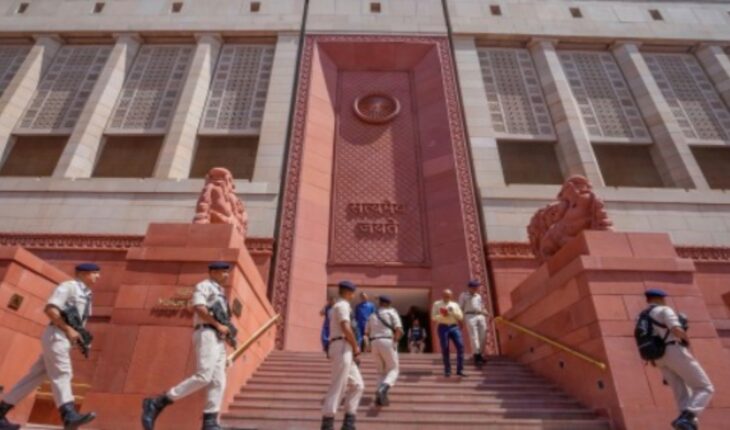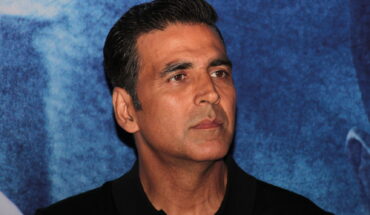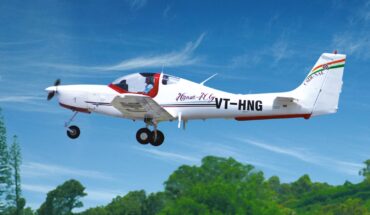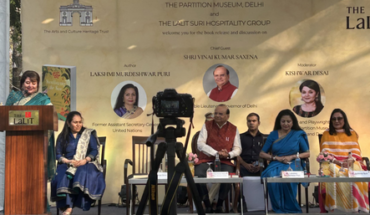New Delhi : Different animals have been installed on the 6 doors of the new parliament building. What is their importance and why have they been established? Let’s know what is its religious and mythological significance and what are the idols of these animals. The new Parliament building has already attracted world with its headlines due to its unique architecture. What is the spiritual, mythological significance of the animals on all 6 doors of the new building? All these are inspired by where they are installed here. Thus, in the new building, the three doors of knowledge, power and karma have been discussed more. Meaning, three gates are discussed. In fact, there are six entrances and exits in this building. Gyan Dwar, Shakti Dwar and Karma Dwar will be used by Prime Minister, Vice President and Speaker of Lok Sabha. The remaining three Makar, Hans and Shardul gates will be used by members of Parliament, common people and officials-employees etc.
Acharya Swami Vivekananda of Ayodhya says that all the animal statues installed at the door of the new parliament building have great spiritual and mythological significance. All these are symbols of our culture and knowledge in the scriptures. Give motivation to keep going. It is a symbol of happiness, peace and prosperity. Red sandstone idols of auspicious animals have been established as guardian idols in Indian culture based on their importance, their aesthetic appearance, positive qualities and the study of Vastu Shastra.
Let’s know what is the connection of the 6 doors of Parliament with the names of different animals.
Gajdwar : It is in the north direction of the building, Gaj means elephant. Two statues of elephants are installed here. Elephant represents knowledge, progress, wealth, wisdom and memory. It is also a symbol of aspirations. Gaja is the representative of Lord Ganesha, fresh more finance or income are also symbols. The north direction is related to the planet Mercury, which is the source of high intelligence.
Ashwadwar : At the southern entrance is always alert and ready ashwa, Ashwa means horse. The horse is a symbol of patience and power, strength and speed. In the scriptures it has been considered a symbol of prosperity. It is also a symbol of continuous movement. From this, the representative of the quality of the Indian Parliament can also say that it will never stop, it will continue to run in public interest. The statue of the horse represents the Sun Temple of Odisha. It is inspired from there.
Garudwar : This statue is installed at the eastern ceremonial entrance, which symbolizes the aspirations of the people and administrators of the country. In scriptures it represents hope, glory of victory and success which are the vehicles of Lord Vishnu. It is mentioned in the scriptures that the sound of Vedas comes out from their wings while flying. These are also called Vish-Harta. They are invoked by playing it in the temples while offering food to the Lord, so that if there is any toxic substance in the food, its effect will be eliminated. This statue is influenced by the 18th century Nayaka era in Tamil Nadu.
Makardwar : It is a mythical aquatic creature. Makar combines the body parts of various animals, which represents unity in diversity among the people of the country. In the scriptures, Makar is said to be the symbol of Cupid’s flag. It is also the vehicle of Lord Varun and Mother Ganga. Makar is said to be inspired by the Hoysleswara temple in Karnataka.
Sharduldwar : It is known as another mythical creature, which is said to be the most powerful, foremost among all living beings, which symbolizes the strength of the people of the country. Shardul means kind of Lion, is a symbol of victory, Maa Durga rides on it. The statue of Shardul is said to be inspired from Gujari temple in Gwalior.
Hansdwar : Hansa or swan at the public entrance in North East will attract people’s attention. In the scriptures, swan is the vehicle of Mother Saraswati. It is a symbol of peace, knowledge and harmony. Hansavatar is also one of the 24 incarnations of Lord Vishnu. It is inspired by the Vijay Vittala Temple in Hampi, Karnataka.






